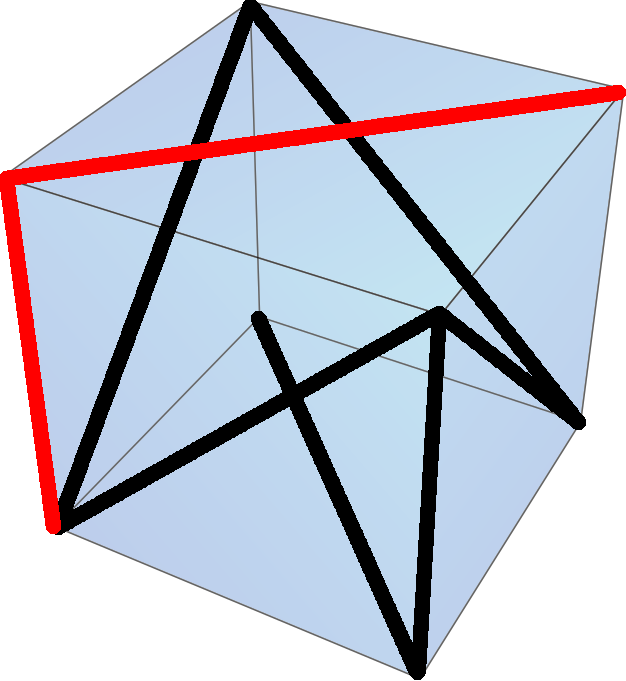In the Spring 1957 issue of Pi Mu Epsilon Journal, C.W. Trigg points out that, by two continuous cuts, the surface of a cube can be divided into two pieces that can be unfolded and assembled into a hollow square:

The cuts divide the cube’s surface into two congruent pieces, each composed of six connected isosceles right triangles. Joining these two pieces forms a hollow square with exterior side and interior side
, where x is the length of the cube’s edge.
